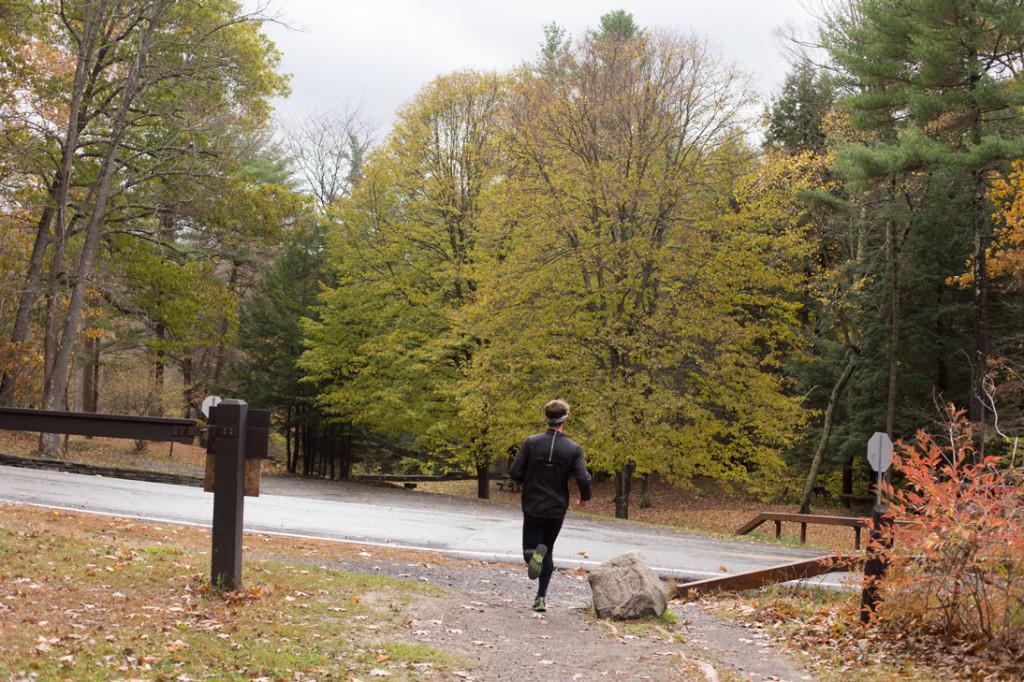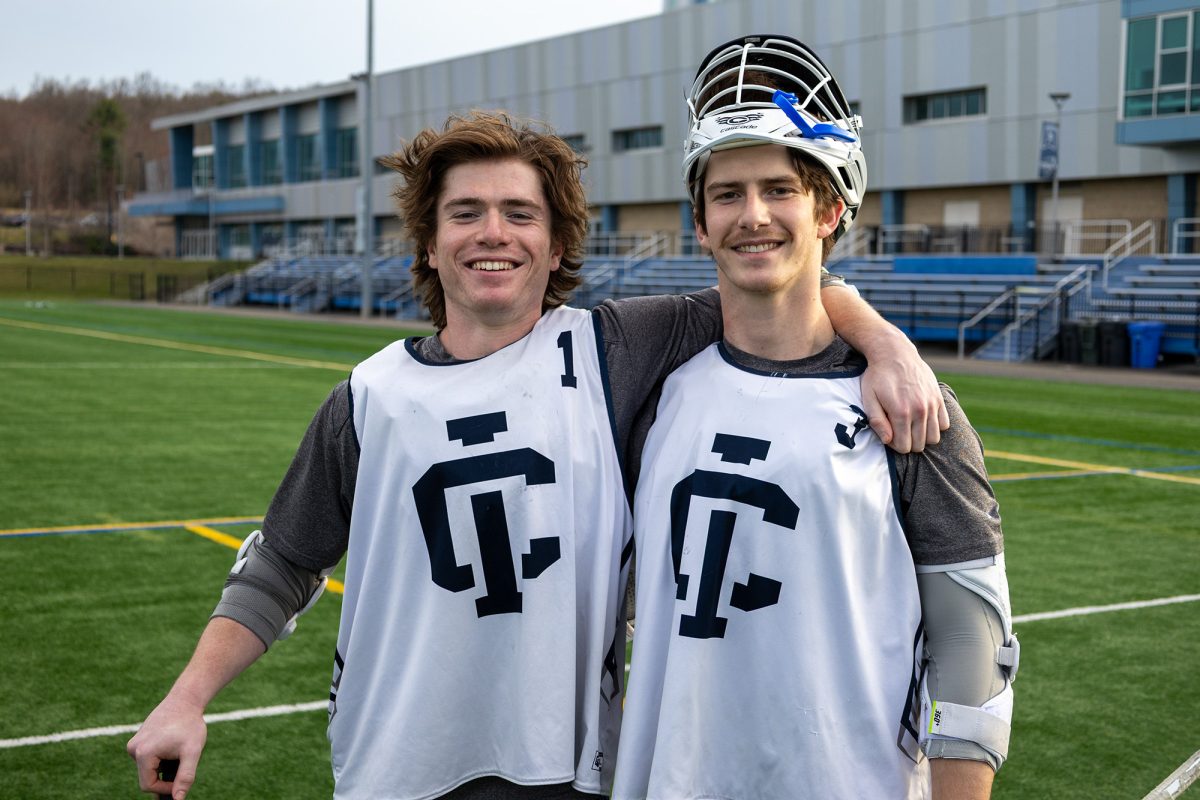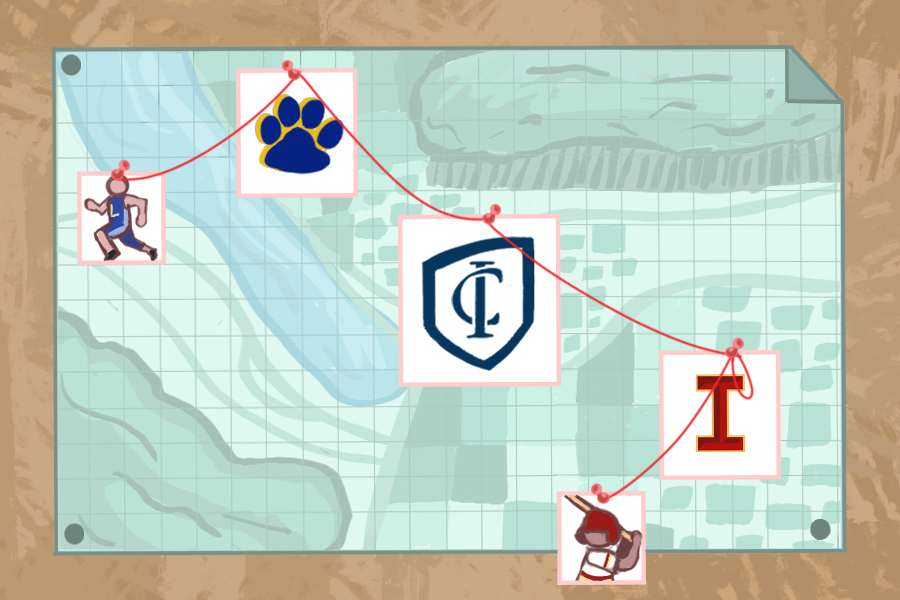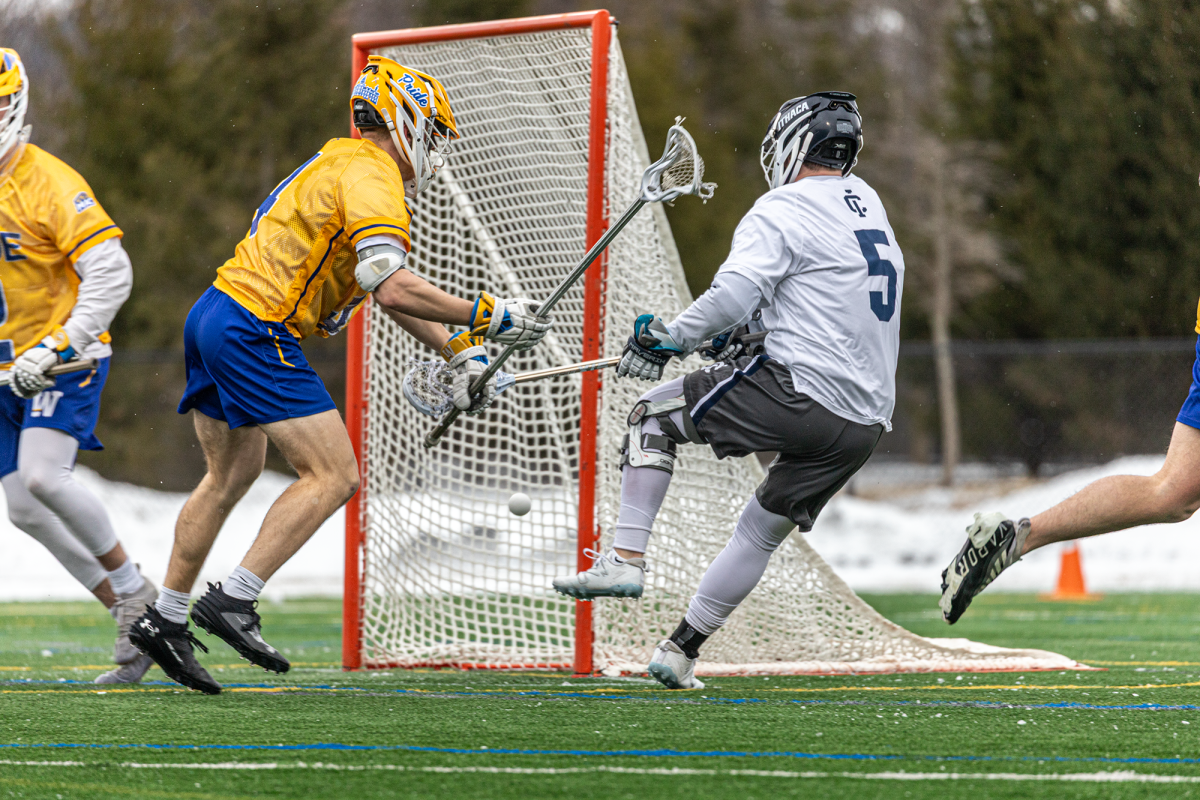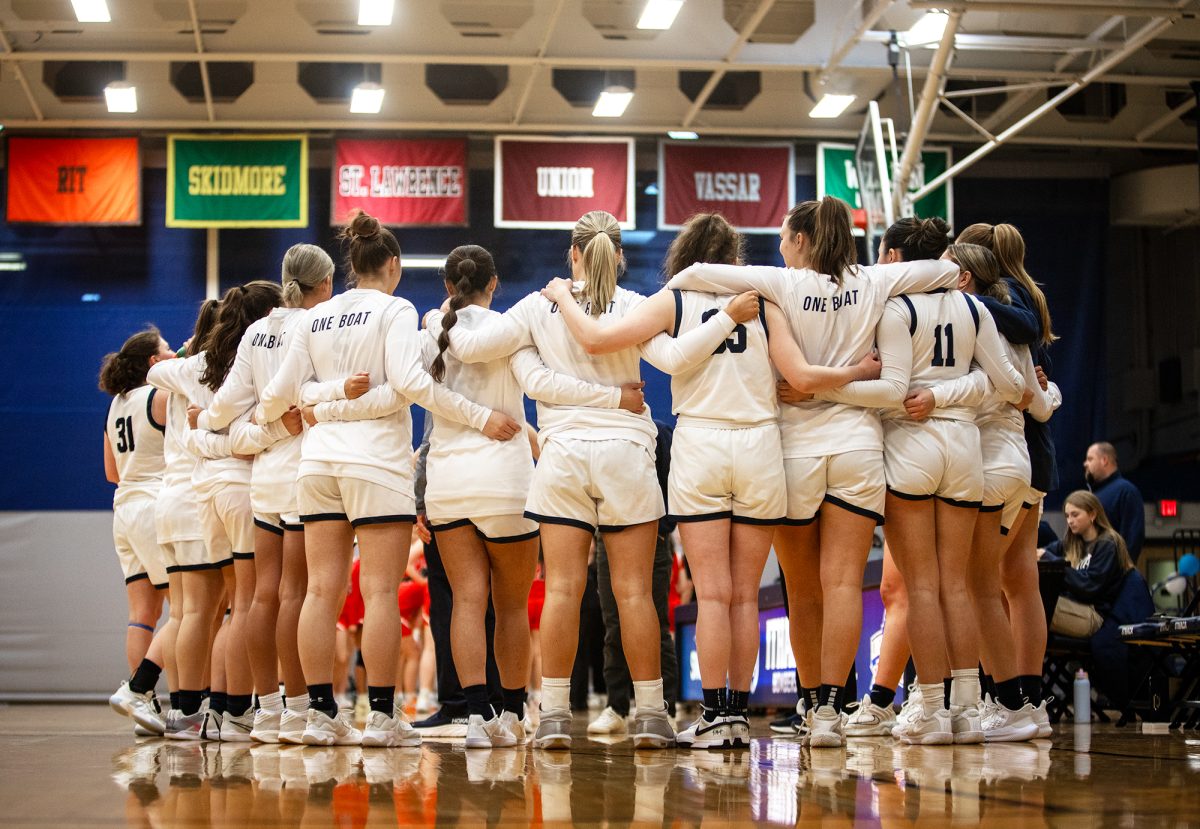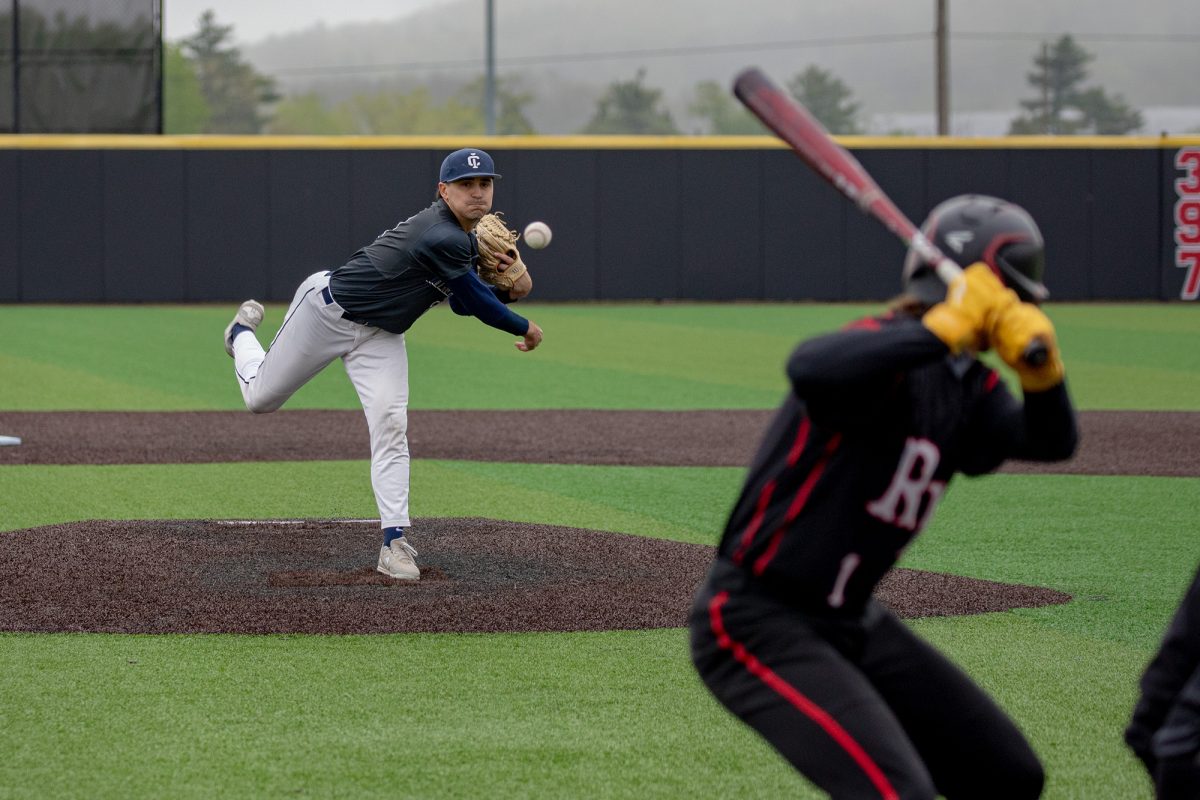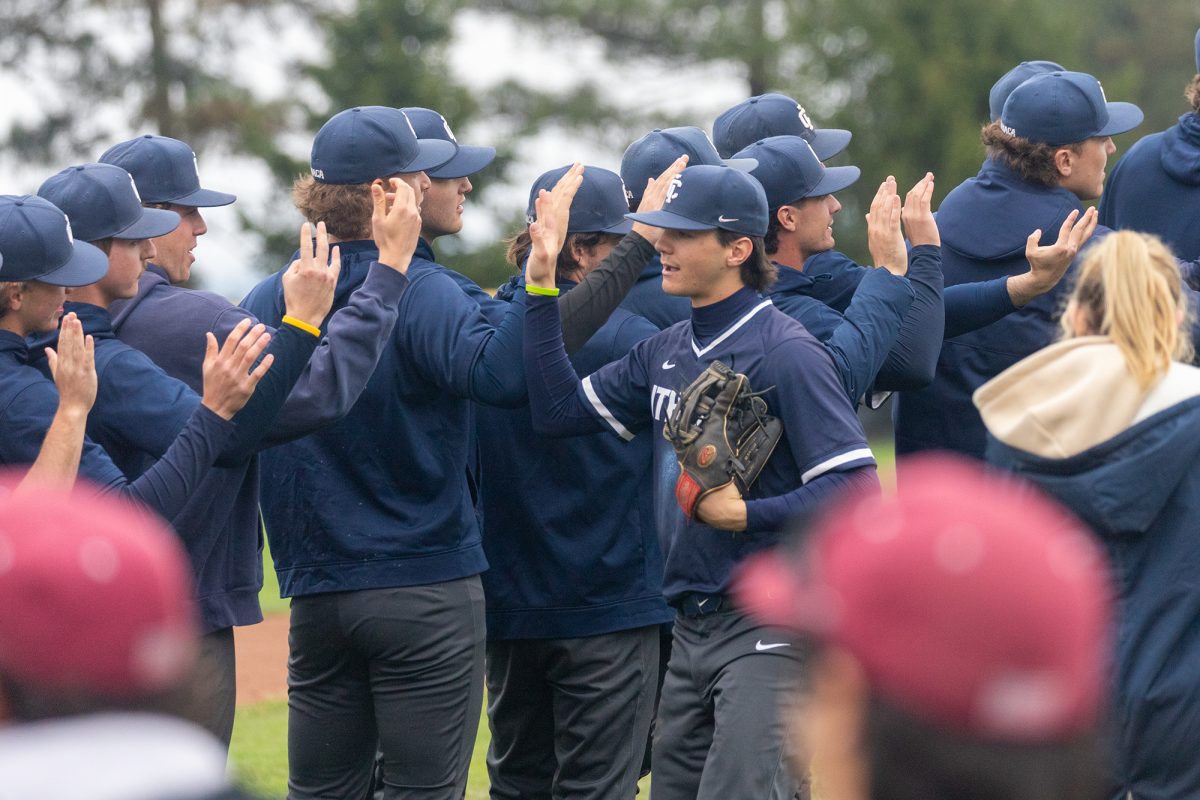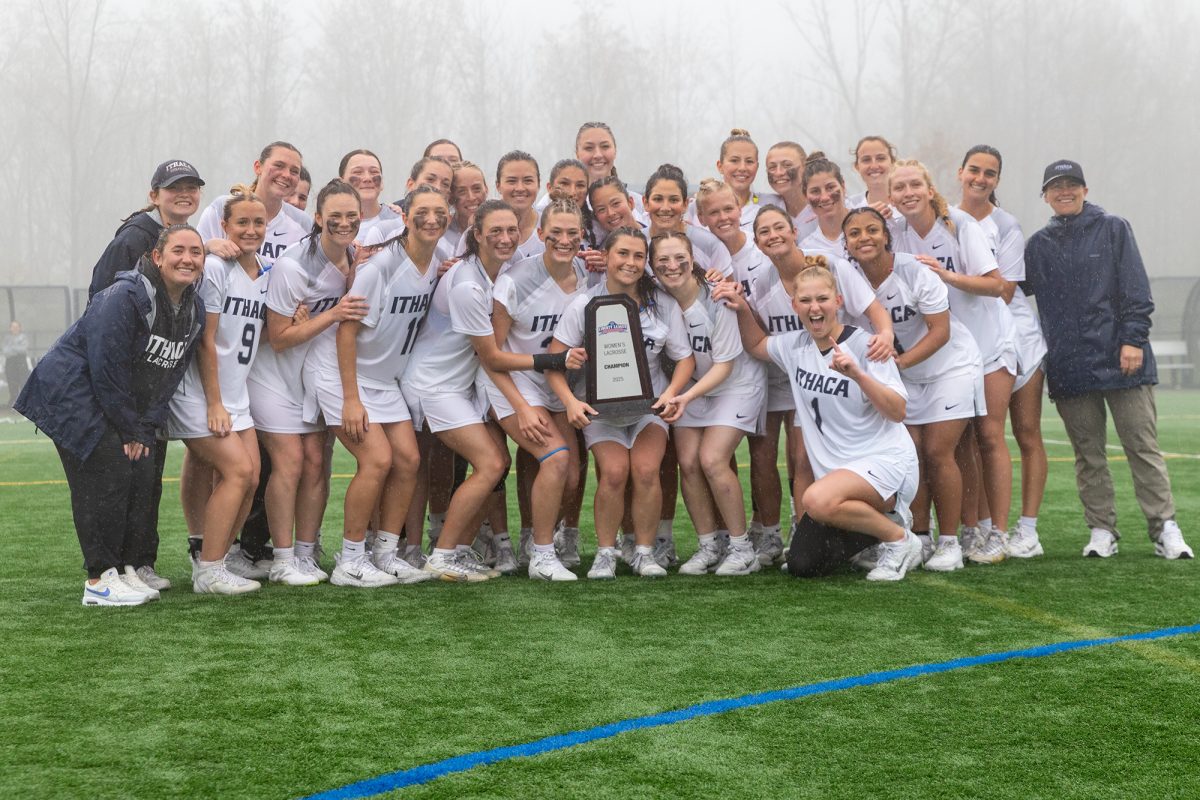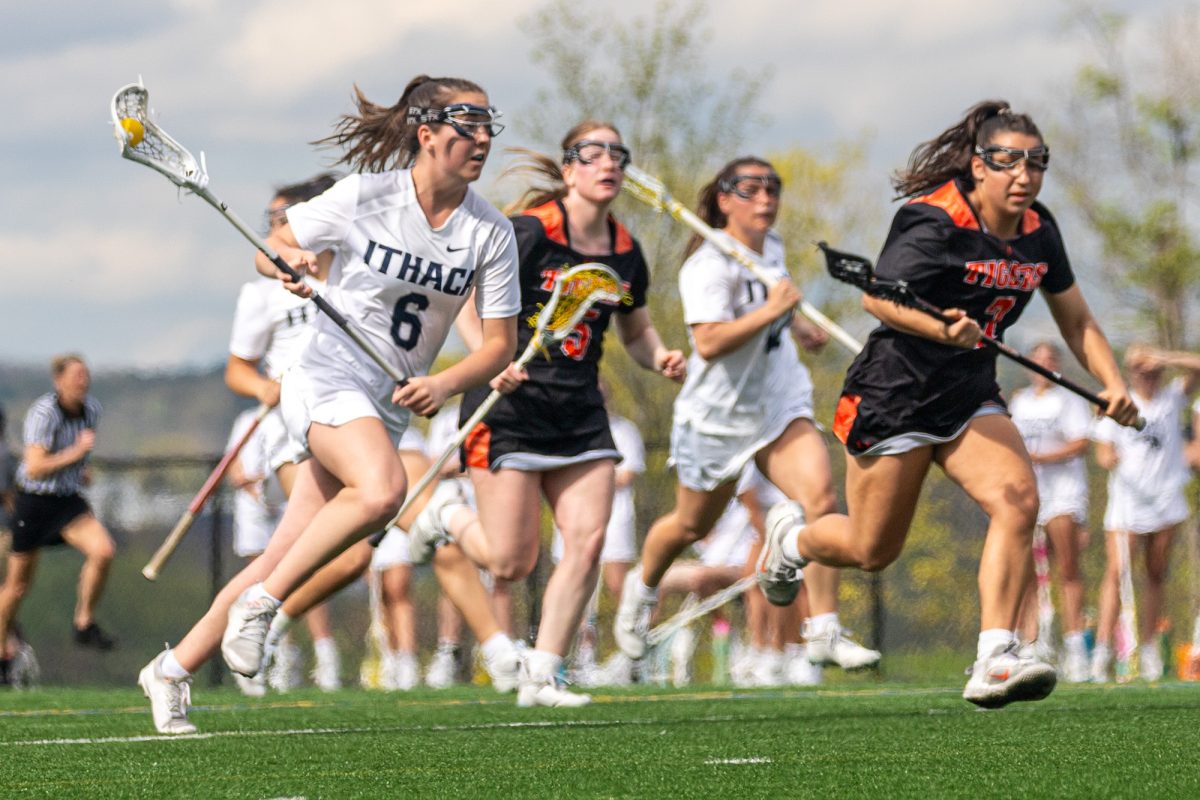In the pitch black of predawn, senior Devin Larsen looks up at the stars and inhales deeply. The crisp, southern–New England night air fills his lungs and heightens his senses as he stares at the twinkling lights. They’re the only source of natural light in the wooded area around him.
He exhales. He can see his breath escaping his lips in small clouds of moisture. The temperature in Westwood, Massachusetts, is in the high-30s. Cold for 4 a.m. on a mid-October morning, but not excessively so. Larsen stretches his already limber muscles. His anticipation — as it has been for weeks now — growing by the second.
He feels ready.
Guided only by the linear glow of his headlamp, Larsen takes in the scene surrounding him. Dozens of runners, crowded around the starting line, jogging, keeping themselves warm, well aware of the four 25-mile loops that lie between them and finishing the Trail Animals Running Club’s 100-mile ultra marathon.
Larsen doesn’t see those miles as a burden, but as a challenge. This is what he has been training for for months — for years, really. To run 100 miles.
“Everything just physically felt amazing,” he said. “Mentally, I was completely clear, and my body felt completely lucid and ready to go.”
He won’t fail. He can’t fail. Not after what he’s been through.
Because, after all, Larsen isn’t just running to finish the race. As he always has, he’s running to escape.
—
To Larsen, the severe depression that he struggled with in high school — and continues to deal with today — is a winding trail, much like the one he is about to run. There are high points and low points, rocks he can trip over and potholes that threaten to hobble him.
Larsen has never sought professional help for his depression, nor has he ever been clinically diagnosed. Preferring to keep his struggle internal, Larsen found that literally running through, or around, or over these mental obstacles helps him cope with the depression that sometimes feels like it has engulfed his entire body. Senior Jon Yoskin, one of Larsen’s roommates, agrees long-distance running is Larsen’s release.
“Running helps him sort things out and organize his life,” Yoskin said. “You’ll see him just go off at a full-on sprint, and that’s how you know that Devin might be dealing with something.”
You’ll see him just go off at a full-on sprint, and that’s how you know that Devin might be dealing with something.”
It is in these runs that Larsen finds an inner peace. It is not an easy subject for him to talk about, and he can’t really explain the enlightenment he finds when running.
All he knows is that it helps alleviate the stress and desolation that accompany his depression.
“After some inclining depression … I found spending those hours by yourself out in the woods really kind of taught you a lot about yourself,” he said. “It gives you the sense you might get out of yoga. You’re completely focused on yourself and trying to find your sense of inner balance.”
When he’s in Ithaca, Larsen spends hours every day running. He’ll usually complete anywhere from 10–15 miles on weekdays, then do one “heavy” day on the weekends that consists of around 30–40 miles and on the other weekend day, he averages about 20 miles for a total of approximately 120 miles a week.
Mileage-wise, though, his longest outing was a five-day adventure that he did “for the hell of it” into New Hampshire’s White Mountains near his hometown of Merrimac, Massachusetts. In the five days, he ran up each of the 48 4,000-foot mountains in the White Mountains region.
With an end goal between 16–18 hours, the grueling 100-mile ultra will be the longest run Larsen has attempted.
“There are going to be some downturns and minor breaking points where I’m going to be questioning myself,” he said. “It’s just kind of looking ahead and seeing that challenge, however nervous it makes me feel, and say, ‘I’m ready to take it on. I’ve trained hard enough. I’m willing to see where it goes and willing to fight it.’”
—
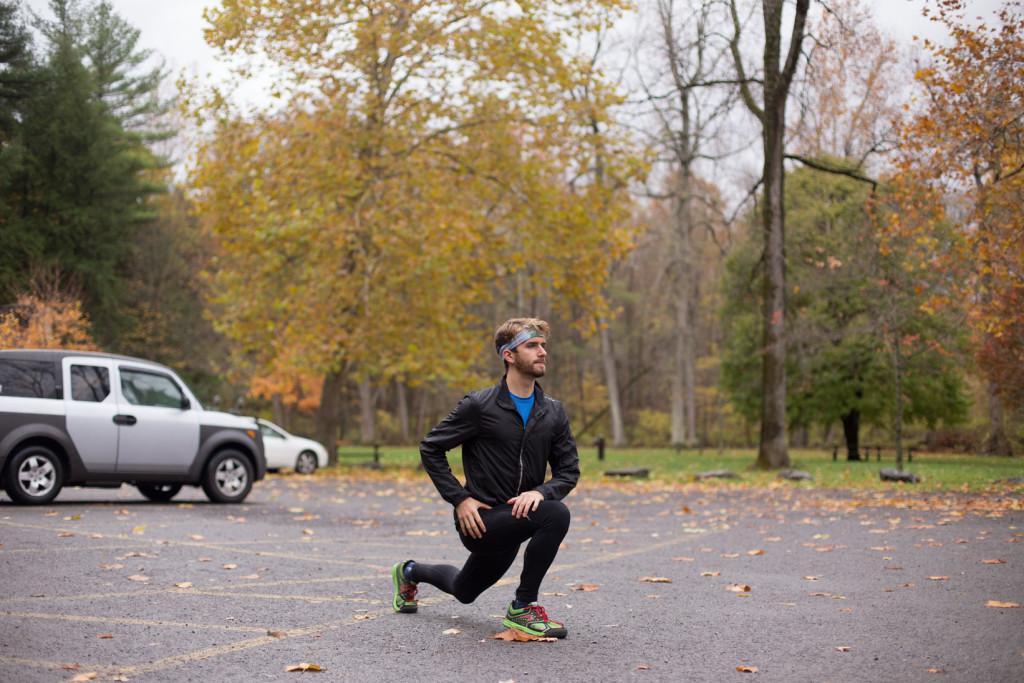
The first few miles of the race, Larsen is flying. His feet barely touch the ground as his tall, lanky frame lopes through the wooded course. Almost immediately, he and another runner pull out to the front of the pack.
Larsen wants to keep it that way. This isn’t the first time that winning the race has crossed his mind. It would be validation for him, as it’s only his second ultra marathon, his first being a 50K in August. He’s a newcomer to this sport, which usually appeals to an older demographic.
The sun is still below the horizon, and Larsen is relying only on his headlamp to navigate the twists and turns of the packed dirt. It had poured the night before, and the woods are still damp with rainwater.
But Larsen barely notices any of this. He begins to sweat, the beads resting in his sun-bleached swoop of dirty blond hair. His eyes are focused directly ahead.
Perhaps it is this pure concentration that is Larsen’s downfall. Around the third mile, he comes across a footbridge but can’t see the wet film that has layered itself onto the soggy wood. One wrong plant of his foot, and Larsen feels his feet go out from under him, his knee slamming hard into the ground, and one of his water bottles digging into his chest and bruising his ribs.
Instead of turning to help, the runner Larsen has been chasing bolts, leaving Larsen to get up and continue the pursuit.
“Rather than taking whatever had just happened into evaluation, I just got up and went after him,” Larsen said. “The next miles were just us kind of going off back and forth.”
Over the course of the next three miles, Larsen is able to distance himself from the runner enough to slow down and evaluate the damage to his knee.
He looks down. His leg looks like a twisted sort of rainbow. A brilliant, purple bruise is already coloring its way along his knee, and blood spatters the rest of his calf and thigh.
Larsen refuses to believe that this setback will end his race. Besides, the adrenaline coursing through his body is preventing him from feeling any pain. It’s the natural high that comes with running. The same feeling that has pulled him out of depression time and again is now keeping him from experiencing any agony that his knee may be causing.
He pushes on.
[acf field=”code1″]
—
It was, ironically, through an injury that Larsen started running. During his sophomore year of high school, after years of football, baseball and wrestling, Larsen was done. He was tired of the injuries that came with these sports — in particular a hit during football that broke his tibia and patella and tore his MCL.
After nearly a year of using crutches and rehabilitation, Larsen said he knew he needed a different sport.
“I just decided to take up a more nonphysical sport that wasn’t going to break my bones or give me terrible concussions,” he said. “That was running. I kind of fell in love with it right away.”
Larsen ran track and field and cross-country in high school, but chose to focus on academics when he came to Ithaca College, though his approximately 4-minute mile time could compete with the fastest mile times in the Empire 8 conference.
Running, however, was something Larsen never wanted to give up, even if he wasn’t competing for a team.
It was during Fall 2014 that he read about ultrarunning for the first time. At the time, Larsen had already committed himself to vegetarianism, and longer distances intrigued him.
“It reinvigorated this love of running for me, and I thought, ‘Maybe I’ll start putting on longer distances and see how it feels,’” he said. “In the winter here when it was cold as hell and I was here by myself, I started putting on heavier and heavier miles.”
And over the course of the past year, Larsen has found his athletic calling. In addition to his 120-mile-per-week training regimen, he finds time to lift and cross-train in biking and swimming. He also made the full transition to veganism, and his physical well-being is part of the reason he has never taken medication for his depression.
That was running. I kind of fell in love with it right away.”
Senior Allie Johnson, one of his other roommates, said Larsen is constantly striving toward his fitness goals.
“He’s definitely passionate and driven by what he wants to achieve,” she said. “He doesn’t tell us a lot about his running because it is just so personal for him. He’s not looking for us to be impressed by him or anything.”
Despite Larsen’s outward modesty, those closest to him are aware of his dedication. More than once, Johnson has walked in on Larsen stretching in the living room, and Yoskin said he once went into the kitchen to find Larsen making a banana, avocado and kale smoothie.
“I was just like, ‘Hey man, if that works,’” Yoskin laughed. “It’s all calculated. He keeps a very close eye on what is going into his body and what he’s doing physically to prepare.”
Larsen’s body is so attuned to his diet that, during a 45K race in preparation for the 50K race, he accidentally grabbed a small cup of Pepsi from one of the aid stations thinking it was Gatorade and drank it before continuing his race. The processed sugars in the Pepsi that Larsen’s body wasn’t used to affected him so badly that he vomited.
He hasn’t touched soda — or most other junk foods — in the nearly three months since.
—
The miles are getting harder for Larsen as he continues the race, and he begins to feel the ligaments in his injured knee tightening. Initially, he pushes through the discomfort, but the trail is wearing on him, his body and his mindset.
It is this, the unexpectedly grueling nature of the course, that race director Josh Katzman cites as one of the biggest reasons that runners end up dropping out.
“The course, it grinds people down,” Katzman said. “There are places where you can get into a good rhythm, but that’s broken up by the short, little up-and-down kind of things that aren’t severe, but they just gradually wear your body down.”
Though he is just 12 miles into the race, Larsen is feeling that wear, and it’s only getting worse. He stops every couple of miles to quickly stretch his knee before continuing the run, but by mile 20, the pain is unbearable.
He only has five miles to go before completing the first loop, and he decides to at least finish the first circuit before reevaluating.
Larsen pulls his pace back. He was previously averaging his goal of 9–10 minutes per mile, but it is a speed he can no longer maintain. Frustration sets in, along with a new pain in his right leg, from overcompensating for his injured left. Just as he has been so many times before, Larsen is trapped in his own head.
“It really sucked because everything else felt fantastic,” he said. “There was no pain anywhere else. Even in that moment, I started to question myself, like ‘Could I seriously in an actual, truthful moment, do another 75 miles on this right now?’”
—
In the few hours each day that Larsen isn’t focused on his physical fitness, he finds time for his other passion. He was never planning on pursuing physics — he came to the college as a biochemistry major with a pre-med concentration track.
“I found it wasn’t really interesting me as much as it should have,” he said. “It wasn’t capturing my attention.”
Before his freshman year, Larsen’s love for physics was reinvigorated when he reread many of Carl Sagan’s works, and he decided to switch to physics almost immediately upon his arrival.
Nearly three years later, Larsen serves as the head physics tutor — a massive responsibility that involves organizing evening tutoring sessions and helping intro-level physics students — and is currently working closely with one of his professors, Michael “Bodhi” Rogers, on a project that they hope to send to the American Journal of Physics by the end of the semester. The paper examines the writing styles of Albert Einstein and Henri Poincaré in the context of their arguments on special relativity.
“He’s an excellent student, and I’m really excited about the research project we’re working on because he’s a fantastic writer,” Rogers said. “He’s really good at getting his brain around physics. Coupled with his interest in literature and history and writing, he comes with very distinct perspectives.”
Though Larsen tends to keep running and physics mostly separate, they intersect at the core of his ever-calculated personality.
“Both require an extreme work ethic and devotion,” he said. “Whether it’s based within a massive homework set, research or hitting the trails … it requires devotion. And it’s all whether or not you are willing to give the time and effort required to see those gains and successes.”
—
You’re going to fall, especially on trail races, but it’s just how you go from there.”
In pain and struggling to even jog, Larsen limped back to the start/finish line, where Katzman and a team of other race officials and doctors were waiting.
While a doctor stretched his knee, Larsen was deliberating hard internally. Ideas ricocheted back and forth in his mind. He desperately wanted to finish the race. If he didn’t, all of the time, the runs, the pain, the effort he put into training would be wasted.
But at the same time, finishing the race meant doing so in agonizing pain and potentially further injuring his knee. It could mean an extended period of time without running.
Larsen consulted Katzman, who has organized many races and has seen similar cases.
“I could see with Devin, he definitely did not want to stop,” Katzman said. “I think we both understood at that time that he wasn’t going to get the win … but there’s still a sense of pride, a sense of wanting to finish what he set out to start.”
Finally, after a couple of hours of hoping his knee would feel better, Larsen chose to pull out of the race. His initial reaction was an intense sense of disappointment and frustration toward a situation that he couldn’t control. But then he realized that it was just that.
“I at least know that if my knee was perfectly fine, I think I would’ve been totally fine,” he said. “But nothing could’ve prepared me for that to happen, for me to crash 3 miles into a 100-mile race.”
—
It is for this reason that, since the race, Larsen has been able to look at the situation with a clearer mindset. While still frustrated by the fall, he is encouraged by the fact that he knows he could have finished the 100 miles — and likely won.
“What’s almost more remarkable than Devin himself is he’s incredibly humble and modest and energetic,” Katzman said. “Here’s a guy who had a chance at winning this whole thing. I’m guessing when he fell, he knew his race was over in the sense that the result that he was seeking was over. But he still guts it out.”
This is the reason that, just four days after the injury, Larsen was already out for another run.
His mindset has so drastically changed in the past year that he is able to move on from the race. He says ultrarunning is what pulled him out of that depressive state, and though he still loses himself on occasion, that’s when he hits the trails.
“When you do take that time to run … it’s just you stripping away everything else and saying, ‘Let’s just focus on me physically and mentally,’” he said. “Really, the fact that I didn’t wallow in any sense of self-deprecation or depression following the race kind of goes to show the amount of strength and how much my mindset has changed over the past year to the point that, for me now, it’s not beating myself up over it.”
Instead, Larsen is turning to the future. After he graduates, Larsen wants to pursue running as a career, to see whether it’s a feasible option to earn a living. His backup plan involves moving out west to work with underprivileged children in an outdoor program.
Or there’s always physics.
“He has a lot of pathways he can go down,” Rogers said. “I think after he finishes up seeing what he can do with running, it’ll be fun to see where he goes.”
But no matter where Larsen ends up, he says the future can only hold more ultramarathons. He is already registered for a 50K on Nov. 7 and is planning on signing up for another 100-mile race as soon as his knee is fully healed.
“All I really look forward to is getting back on the trail and enjoying putting one foot in front of the other and just taking on whatever I want to do that day,” he said. “You’re going to fall, especially on trail races, but it’s just how you go from there.”
